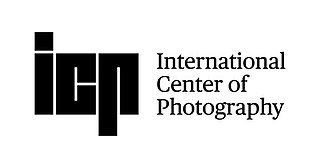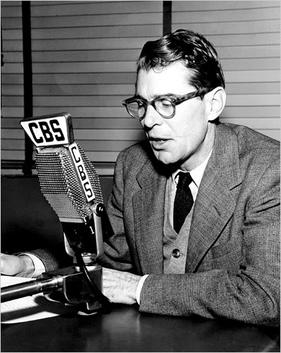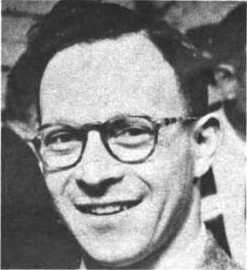
Stars and Stripes is a daily American military newspaper reporting on matters concerning the members of the United States Armed Forces and their communities, with an emphasis on those serving outside the United States. It operates from inside the Department of Defense, but is editorially separate from it, and its First Amendment protection is safeguarded by the United States Congress to whom an independent ombudsman, who serves the readers' interests, regularly reports. As well as a website, Stars and Stripes publishes four daily print editions for U.S. military service members serving overseas; these European, Middle Eastern, Japanese, and South Korean editions are also available as free downloads in electronic format, and there are also seven digital editions. The newspaper has its headquarters in Washington, D.C.

The Omaha Race Riot occurred in Omaha, Nebraska, September 28–29, 1919. The race riot resulted in the lynching of Will Brown, a black civilian; the death of two white rioters; the injuries of many Omaha Police Department officers and civilians, including the attempted hanging of Mayor Edward Parsons Smith; and a public rampage by thousands of white rioters who set fire to the Douglas County Courthouse in downtown Omaha. It followed more than 20 race riots that occurred in major industrial cities and certain rural areas of the United States during the Red Summer of 1919.

The International Center of Photography (ICP), at 79 Essex Street on the Lower East Side of Manhattan, New York City, consists of a museum for photography and visual culture and a school offering an array of educational courses and programming. ICP's photographic collection, reading room, and archives are at Mana Contemporary in Jersey City, New Jersey. The organization was founded by Cornell Capa in 1974.

Don Hollenbeck was a CBS newscaster, commentator, and associate of Edward R. Murrow and Fred W. Friendly. He died from fuel gas inhalation as it was discovered that his stove and oven had been turned on but not lit. Consequently, Hollenbeck's death was ruled a suicide. Reasons that it might have been suicide included health problems, depression, a broken marriage, and frequent published attacks by Jack O'Brian, a Hearst columnist and supporter of Joseph McCarthy.

The Ubyssey is the University of British Columbia's official, independent student-run paper and is published bi-weekly on Tuesday. Founded on October 18, 1918, The Ubyssey is an independent publication funded by a $7.09 annual fee, from which certain students can opt out. The staff functions as a collective; current UBC students who have contributed to the paper and attend staff meetings are eligible to become staff members. The staff elects the full- and part-time editors on an annual basis. The Ubyssey Publications Society board and president, who deal chiefly with management of the business affairs and strategies of the paper and do not play any editorial role, are elected by the general student body annually at the AMS elections.

The New York Evening Mail (1867–1924) was an American daily newspaper published in New York City. For a time the paper was the only evening newspaper to have a franchise in the Associated Press.
Forensic science holds the branch of forensic photography which encompasses documenting both suspected and convicted criminals, and also the crime scenes, victims, and other evidence needed to make a conviction. Although photography was widely acknowledged as the most accurate way to depict and document people and objects, it was not until key developments in the late 19th century that it came to be widely accepted as a forensic means of identification.
A comic strip syndicate functions as an agent for cartoonists and comic strip creators, placing the cartoons and strips in as many newspapers as possible on behalf of the artist. A syndicate can annually receive thousands of submissions, from which only two or three might be selected for representation. In some cases, the work will be owned by the syndicate as opposed to the creator. The Guinness World Record for the world's most syndicated strip belongs to Jim Davis' Garfield, which at that point (2002) appeared in 2,570 newspapers, with 263 million readers worldwide.
The Photo League was a cooperative of photographers in New York who banded together around a range of common social and creative causes. Founded in 1936, the League included some of the most noted American photographers of the mid-20th century among its members. It ceased operations in 1951 following its placement in 1947 on the U.S. Department of Justice blacklist with accusations that it was a communist, anti-American organization.
Events from the year 1880 in the United States
Helen Gee (1919–2004) was an American photography gallery owner, co-owner of the Limelight in New York City, New York from 1954 to 1961. It was New York City's first important post-war photography gallery, pioneering sales of photographs as art.
The New York World was one of the first newspapers to publish comic strips, starting around 1890, and contributed greatly to the development of the American comic strip. Notable strips that originated with the World included Richard F. Outcault's Hogan's Alley, Rudolph Dirks' The Captain and the Kids, Denys Wortman's Everyday Movies, Fritzi Ritz, Gus Mager's Hawkshaw the Detective, Victor Forsythe's Joe Jinks, and Robert Moore Brinkerhoff's Little Mary Mixup.
Jazz Information was an American non-commercial weekly jazz publication founded as a record collector's sheet in 1939 by Eugene Williams (1918–1948), Ralph Gleason, Ralph de Toledano, and Jean Rayburn, who married Ralph Gleason in 1940.

Arthur Lavine was an American mid-century photojournalist and magazine photographer who, among other achievements, produced significant documentation of New Caledonia during World War 2.
Paul Berg was an American photojournalist for the St. Louis, Missouri Post-Dispatch, and also wrote about the practice of photojournalism.
The Chocolate Kiddies is a three-act Broadway-styled revue that, in its inaugural production – from May to September 1925 – toured Berlin, Hamburg, Stockholm, and Copenhagen. The show never actually performed on Broadway, but was conceived, assembled, and rehearsed there. Chocolate Kiddies commissioned new works, but was also an amalgamation and adaptation of several leading African American acts in New York, specifically Harlem, intended to showcase exemplary jazz and African American artistry of the Harlem Renaissance. Early jazz was uniquely American; and, while New Orleans enjoys popularity for being its birthplace, the jazz emerging from Harlem during the Renaissance had, on its own merits, captured international intrigue.
Skippy Adelman was an American photographer, best known for his book Jazzways, featuring monochrome photography of jazz musicians, and for his contributions to the bygone New York City daily paper, PM, where he worked as a staff photojournalist.








